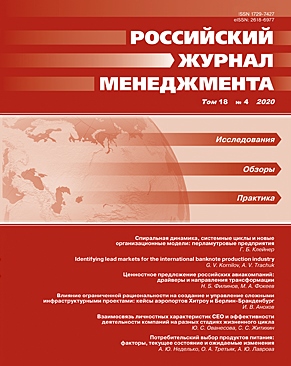Потребительский выбор продуктов питания: факторы, текущее состояние и ожидаемые изменения
DOI:
https://doi.org/10.21638/spbu18.2020.406Аннотация
Потребитель выбирает продукты питания, исходя из множества ценовых и неценовых факторов. В статье приведен критический обзор ключевых категорий факторов, влияющих на выбор потребителя, а также представлена предполагаемая трансформация их состава и приоритетности в условиях экономической рецессии и пандемии. Обсуждаемая в статье классификация факторов основана на различных методах получения информации: заявленных, поведенческих и физиологических. Выделение в схеме различных типов информации о факторах позволяет акцентировать внимание на тех из них, которые требуют дополнительного анализа с использованием разных методов сбора информации. Отдельно приведены специфичные факторы, влияющие на выбор продуктов питания среди молодежи, которые необходимы для формирования и корректировки пищевых привычек в период взросления. В исследовании предложена отправная позиция для проведения сравнительного анализа факторов, влияющих на потребительский выбор продуктов питания, в том числе и при существенных изменениях во внешней среде. Результаты работы могут быть полезны производителям брендов и ритейлерам, разрабатывающим маркетинговые стратегии, а также государственным органам для установления или корректировки правовых ограничений по потреблению вредных и стимулированию продажи полезных продуктов питания.
Ключевые слова:
факторы, влияющие на потребительский выбор, продукты питания, методы маркетинговых исследований
Скачивания
Библиографические ссылки
REFERENCES IN LATIN ALPHABET
Translation of references in Russian into English
Загрузки
Опубликован
Как цитировать
Выпуск
Раздел
Лицензия
Статьи журнала «Российский журнал менеджмента» находятся в открытом доступе и распространяются в соответствии с условиями Лицензионного Договора с Санкт-Петербургским государственным университетом, который бесплатно предоставляет авторам неограниченное распространение и самостоятельное архивирование.





